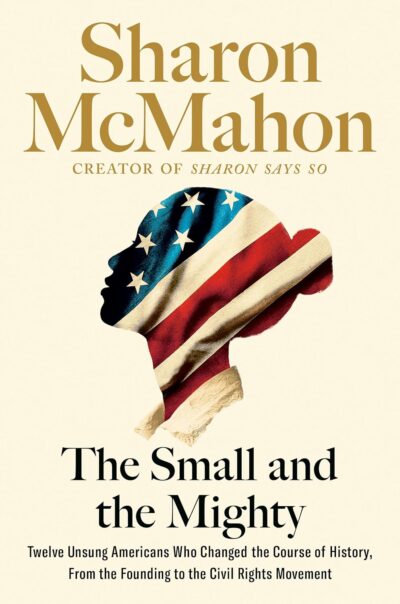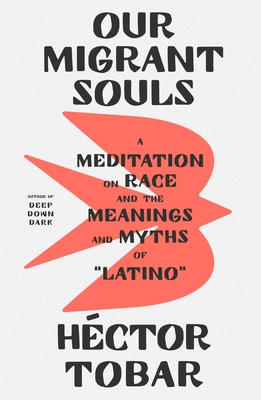392 Results with the "Biography" genre
Adventure Fiction (146)
Business & Finance (1)
Children's Literature (77)
Comics (6)
Culture (9)
Drama (21)
Dystopian (2)
Fable (5)
Fantasy (270)
Fiction (495)
Finance (16)
Gothic Fiction (5)
Historical Fiction (376)
History (55)
Horror (10)
Lifestyle (1)
Literary (430)
Literary Fiction (3)
Memoir (93)
Mystery (163)
Non-fiction (63)
Novel (514)
Paranormal Fiction (96)
Philosophical (132)
Poetry (257)
Political Fiction (1)
Politics (29)
Practical (32)
Psychological Thriller (66)
Relationship (5)
Romance Novel (328)
Romantic Melodrama (11)
Satire (18)
Science (25)
Science Fiction (191)
Self-help (64)
Society (64)
Society (2)
story (2)
Thriller (486)
True Crime (53)
view (13)
Women's Fiction (1)
-
Chapter
Epigraph
 Epigraph sets the tone for The Demon of Unrest, offering a poignant and thought-provoking collection of quotes that delve deeply into the central themes of slavery, governance, and the personal toll of war. The first quote, attributed to Arthur Peronneau Hayne, reflects his conviction about the essential role of slavery in Southern society. Hayne contends that the comfort and well-being of Southern families depend entirely on the continuation of slavery, and he argues that separation from the Union is the…
Epigraph sets the tone for The Demon of Unrest, offering a poignant and thought-provoking collection of quotes that delve deeply into the central themes of slavery, governance, and the personal toll of war. The first quote, attributed to Arthur Peronneau Hayne, reflects his conviction about the essential role of slavery in Southern society. Hayne contends that the comfort and well-being of Southern families depend entirely on the continuation of slavery, and he argues that separation from the Union is the…-
554.9 K • Ongoing
-
-
Chapter
Crisis
 Crisis unfolded as Edmund Ruffin embarked on a critical journey from his plantation near Gainesville, Florida, to Tallahassee to attend the state secession convention in early January 1861. During his travels, Ruffin was made aware of Major Anderson’s actions at Fort Sumter, which hinted at the potential for imminent conflict. This news fueled Ruffin’s belief that the war could hasten the secession decisions within the convention. Despite Florida's hesitance, Ruffin strongly advocated for swift action,…
Crisis unfolded as Edmund Ruffin embarked on a critical journey from his plantation near Gainesville, Florida, to Tallahassee to attend the state secession convention in early January 1861. During his travels, Ruffin was made aware of Major Anderson’s actions at Fort Sumter, which hinted at the potential for imminent conflict. This news fueled Ruffin’s belief that the war could hasten the secession decisions within the convention. Despite Florida's hesitance, Ruffin strongly advocated for swift action,…-
554.9 K • Ongoing
-
-
Chapter
First Day
 On March 5, the first day of Abraham Lincoln’s presidency, he was immediately thrust into the turbulent realities of leading a deeply divided nation. He received a letter from William Seward, who had agreed to serve as Secretary of State, confirming his acceptance of the position. Seward reflected on his resignation from Congress, acknowledging the delicate political landscape and how fortunate he felt to have avoided major fallout from his decision. Despite their past rivalry during the Republican…
On March 5, the first day of Abraham Lincoln’s presidency, he was immediately thrust into the turbulent realities of leading a deeply divided nation. He received a letter from William Seward, who had agreed to serve as Secretary of State, confirming his acceptance of the position. Seward reflected on his resignation from Congress, acknowledging the delicate political landscape and how fortunate he felt to have avoided major fallout from his decision. Despite their past rivalry during the Republican…-
554.9 K • Ongoing
-
-
Chapter
Confusion
 Confusion reigned in Charleston on April 11 as General P.G.T. Beauregard prepared for the upcoming battle at Fort Sumter. Despite the mounting tension, Beauregard was unready for war, struggling with a severe shortage of gunpowder, which limited the fort’s defensive capabilities. The situation was made more precarious by the fact that only a few hours’ worth of ammunition was available. A fresh supply was expected to arrive from Augusta, Georgia, but the journey was fraught with risk, as the transport…
Confusion reigned in Charleston on April 11 as General P.G.T. Beauregard prepared for the upcoming battle at Fort Sumter. Despite the mounting tension, Beauregard was unready for war, struggling with a severe shortage of gunpowder, which limited the fort’s defensive capabilities. The situation was made more precarious by the fact that only a few hours’ worth of ammunition was available. A fresh supply was expected to arrive from Augusta, Georgia, but the journey was fraught with risk, as the transport…-
554.9 K • Ongoing
-
-
 Chapter 5 delves into the remarkable contributions of Jackson Davis and Virginia Randolph in Henrico County, Virginia, during the early 20th century. Inspired by Booker T. Washington’s educational philosophy, Jackson Davis sought funding from the Jeanes Fund to support the education of Black children. Washington's approach emphasized practical skills and self-reliance over protests, advocating for gradual improvements in the economic status of Black communities. Davis proposed the allocation of the funds…
Chapter 5 delves into the remarkable contributions of Jackson Davis and Virginia Randolph in Henrico County, Virginia, during the early 20th century. Inspired by Booker T. Washington’s educational philosophy, Jackson Davis sought funding from the Jeanes Fund to support the education of Black children. Washington's approach emphasized practical skills and self-reliance over protests, advocating for gradual improvements in the economic status of Black communities. Davis proposed the allocation of the funds…-
123.9 K • Ongoing
-
-
Chapter
Chapter 3: The Sit-Ins
 Chapter 3: The Sit-Ins explores the significant turning point in the Civil Rights Movement that unfolded through the sit-in protests in Nashville, beginning in early 1960. Prior to John Lewis’s return to Nashville in January, local ministers had attempted to challenge segregation at lunch counters but were consistently met with fierce resistance from the owners of department stores. Their efforts, although persistent, lacked the broader support and momentum needed to achieve meaningful change. However,…
Chapter 3: The Sit-Ins explores the significant turning point in the Civil Rights Movement that unfolded through the sit-in protests in Nashville, beginning in early 1960. Prior to John Lewis’s return to Nashville in January, local ministers had attempted to challenge segregation at lunch counters but were consistently met with fierce resistance from the owners of department stores. Their efforts, although persistent, lacked the broader support and momentum needed to achieve meaningful change. However,…-
121.5 K • Ongoing
-
-
Chapter
Copyright
 It seems you've provided the copyright section of a book rather than a chapter of content. This section typically includes publication details and copyright information, and does not contain story elements or chapters that can be summarized. Please upload the actual text from a chapter so that I can assist with your…
It seems you've provided the copyright section of a book rather than a chapter of content. This section typically includes publication details and copyright information, and does not contain story elements or chapters that can be summarized. Please upload the actual text from a chapter so that I can assist with your…-
121.5 K • Ongoing
-
-
Chapter
Acknowledgments
 Acknowledgments for this book are offered with deep appreciation to the individuals and institutions whose support has been instrumental in its creation. A fellowship from the Radcliffe Institute at Harvard University was the foundation of this project, providing not only financial resources but also intellectual stimulation. During my time at Radcliffe, I was fortunate to receive invaluable help from two talented undergraduates, Tania Domínguez-Rangel and Jesús Estrada-Martínez, whose fresh…
Acknowledgments for this book are offered with deep appreciation to the individuals and institutions whose support has been instrumental in its creation. A fellowship from the Radcliffe Institute at Harvard University was the foundation of this project, providing not only financial resources but also intellectual stimulation. During my time at Radcliffe, I was fortunate to receive invaluable help from two talented undergraduates, Tania Domínguez-Rangel and Jesús Estrada-Martínez, whose fresh…-
56.1 K • Ongoing
-
-
Chapter
Resilience
 Resilience within the slave trade during January 1860 is evident, even as the country grappled with the consequences of John Brown’s failed raid and the mounting sectional tensions across the nation. The events of the raid may have rattled the political climate, but they did little to deter the thriving trade in enslaved individuals. Hector Davis, a well-established slave trader in Richmond, noted the market’s success, calling it “very brisk.” Remarkably, young men, particularly those in good…
Resilience within the slave trade during January 1860 is evident, even as the country grappled with the consequences of John Brown’s failed raid and the mounting sectional tensions across the nation. The events of the raid may have rattled the political climate, but they did little to deter the thriving trade in enslaved individuals. Hector Davis, a well-established slave trader in Richmond, noted the market’s success, calling it “very brisk.” Remarkably, young men, particularly those in good…-
554.9 K • Ongoing
-
-
Chapter
Race Week
 Race Week in Charleston, as depicted in The Demon of Unrest, highlights a period of both festivity and underlying tension. On February 6, 1861, the city’s social calendar was dominated by this grand event, which was met with a mix of excitement and fear as the nation teetered on the brink of war. Governor Pickens, aware of the delicate situation, chose to avoid direct confrontation with Fort Sumter, allowing the celebrations to unfold with little interference. The entire city seemed to halt its routine,…
Race Week in Charleston, as depicted in The Demon of Unrest, highlights a period of both festivity and underlying tension. On February 6, 1861, the city’s social calendar was dominated by this grand event, which was met with a mix of excitement and fear as the nation teetered on the brink of war. Governor Pickens, aware of the delicate situation, chose to avoid direct confrontation with Fort Sumter, allowing the celebrations to unfold with little interference. The entire city seemed to halt its routine,…-
554.9 K • Ongoing
-
- Previous 1 … 17 18 19 … 24 Next

